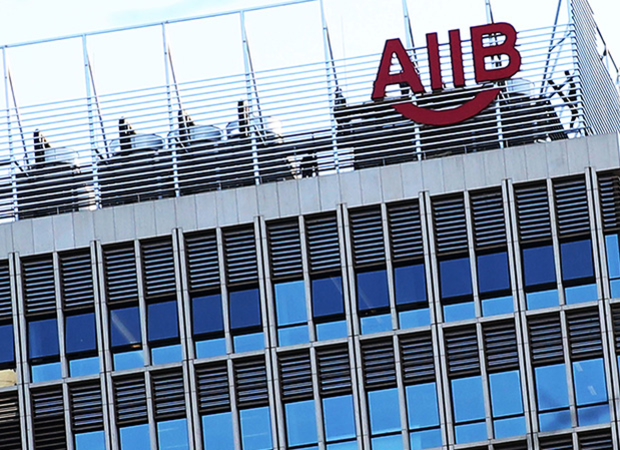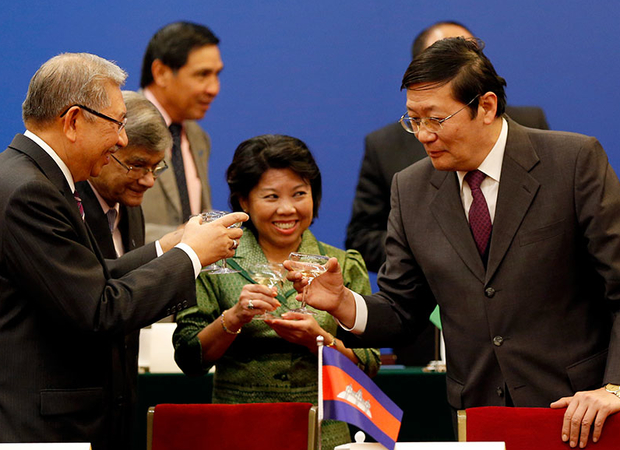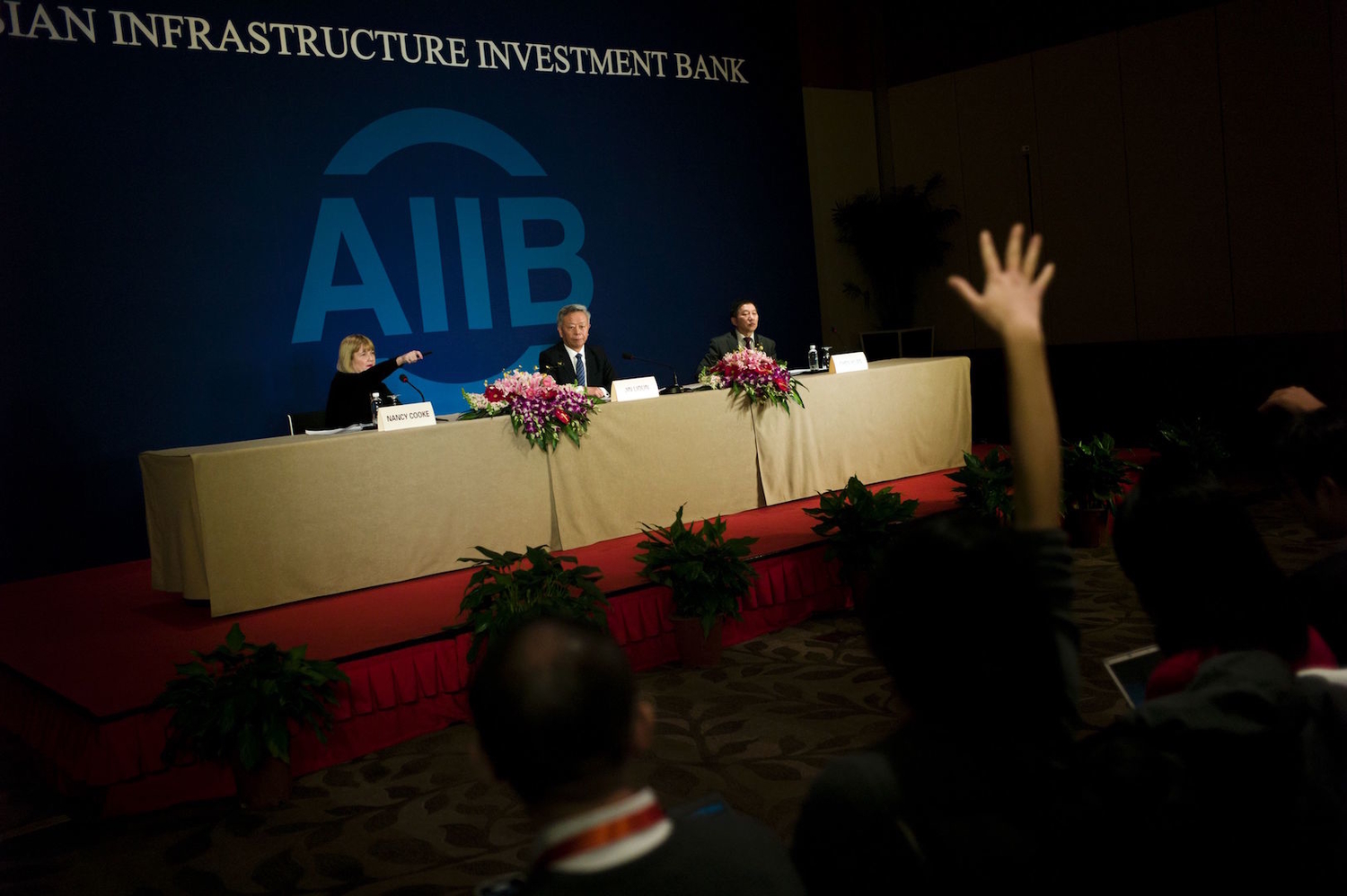The Asian Infrastructure Development Bank (AIIB) unveiled its initial batch of projects at its first annual meeting in Beijing in June, giving the go-ahead to investments totaling U.S.$509 million (3.4 billion yuan) and providing an important yardstick to assess the bank’s first six months.
The AIIB has swiftly been taking shape since China’s President Xi Jinping and Premier Li Keqiang announced its formation less than three years ago. Its mission, they said, was “to promote interconnectivity and economic integration in the region.”
By the end of 2014, 22 Asian countries had signed up to the project. And in June this year 50 countries endorsed membership terms at a ceremony in the Great Hall of the People in Beijing. China is the biggest shareholder in the bank, with a stake of almost 21 percent.
Fears for Influence
AIIB was greeted with alarm by the U.S. and Japan, who have not joined. China’s decision to start a new multi-lateral development bank raised fears it might seek to displace the World Bank, or (conversely) narrowly serve China’s interests in Asia, especially its New Silk Road infrastructure web, woven around its own trade needs.
Environmental activists are also worried about the environmental and social impacts of AIIB projects, and whether hard-won international best practices as eventually applied by the World Bank, would be used for AIIB projects.
So what can be gleaned from its first months of operation, and what does the first round of approved projects tell us?
Learning from Others
The bank’s initial projects are all in Asia (see figure) and has agreed to disperse U.S.$165 million (1.1 billion yuan) for power grid upgrades in Bangladesh and to support two highway projects in Central Asia; U.S.$100 million for Pakistani motorways; and U.S.$27.5 million to upgrade the road linking Tajikistan’s capital, Dushanbe, with neighboring Uzbekistan. The largest loan was U.S.$216 million for the renovation of slum housing in Indonesia.
The AIIB is the sole investor in the Bangladesh project. But the three other loans all reflect AIIB’s pledge to “cooperate with existing multilateral development banks,” and are jointly-funded, either with the Asian Development Bank, the European Bank for Reconstruction and Development, and the World Bank.
Viewpoint
01.15.16
China’s New Development Bank Needs Better Human Rights Protections
China-based environmental activists have given the AIIB’s approach a guarded welcome, although international NGO’s are more critical.
Bai Yunwen, a researcher with Beijing-based NGO Greenovation Hub, said the partnership approach shows the AIIB is being careful in terms of minimising the environmental impact of its investments, and will gain experience quicker by working with and learning from other multilateral banks.
Vigilance
“One thing is certain: the AIIB is determined to avoid reputational damage by making mistakes in its first projects,” Shouqing Zhu, sustainable finance senior associate at the World Resources Institute China, told chinadialogue.
In its own words, the AIIB has promised to be “lean, clean, and green.”
AIIB’s joint projects apply the standards on environmental impacts and social issues, such as labor practices, that have been formulated by partner banks rather than the AIIB’s own fledgling policies.
However, the environmental credentials of the Bangladesh power project will be monitored closely.
“If the environmental and social impacts of this [Bangladesh] project are not properly handled, we may see further revisions to the AIIB’s environmental and social framework,” said Bai.
Global Ambition
AIIB President Jin Liqun said in the annual meeting that he hopes the bank will accept another 24 countries in 2017, including from Latin America. According to the Financial Times, Chile, Colombia, and Venezuela will all aim to apply before the September 30 cut-off date
Jin predicted that AIIB would soon have more members than the U.S.-Japan led Asian Development Bank (ADB). He told the World Economic Forum’s Annual Meeting of the New Champions, held in the northern China city of Tianjin from June 26 to 28, that the AIIB could have as many as 90 members by early 2017, outstripping the ADB’s 67 members.
The bank’s president said that as an international institution the AIIB could not confine its investments to Asia, in view of pressure from African and Latin American countries that could join the bank in the future. A proper balance will be maintained when selecting projects, he said.
Conversation
03.24.15
What Went Wrong With U.S. Strategy on China’s New Bank and What Should Washington Do Now?
The AIIB’s president also confirmed that the bank will support countries outside the “belt and road” region—another name for the New Silk Road, based on its two arms through central Asia by land, and along south east Asia’s sea lanes.
Tsinghua University economics professor Li Daokui told the World Economic Forum meeting that in the near-term there were very real economic reasons for focusing on the belt and road region, and in the longer term the ultimate aim would be for this region to become an economic bloc.
Optimistic
A striking feature of the AIIB’s first annual meeting was the welcome given to NGO participation, particularly in view of NGO’s criticism and demands for transparency. It is rare for major Chinese institutions to invite NGO’s to their annual meetings.
Yu Xiaogang, Director of Green Watershed, said it was a positive development that almost any NGO that requested to attend had been able to.
However, NGO’s were allowed to speak only briefly and were given a limited time to ask questions, which compared unfavorably with World Bank and Asian Development Bank annual meetings
Jin told the Summer Davos forum in Dalian, northern China, that projects must meet three criteria: financial sustainability, environmental protection, and broad public acceptance.
But some international NGO’s say the bank is not yet open enough on its lending criteria.
They point to lax standards when it comes to disclosure and transparency with the bank’s Environmental and Social Safeguarding Framework. The issue of how to avoid environmental and social risks was not addressed at the meeting.
In order to better evaluate how effective the AIIB’s framework is, Greenpeace applied these criteria to four projects funded by the China Development Bank, the International Bank for Reconstruction and Development, the World Bank, and the International Financial Corporation, all of which caused environmental damage. These included an Indonesian coal mine, a South African thermal power plant, and both hydropower and coal-fired power plants in India.
The evaluation focused on three criteria: whether AIIB would reject the investment based on its environmental impact assessment (in a theoretical scenario where the AIIB was the main investor), whether it would be able to prevent environmental damage if investment went ahead, and whether the environmental and social impacts of these projects would be reduced.
Greenpeace found the bank would have invested in these and other potentially environmentally damaging projects.
China’s role as a destination for green finance will only grow, but critics say they want to see more transparency on how that money is being used.




